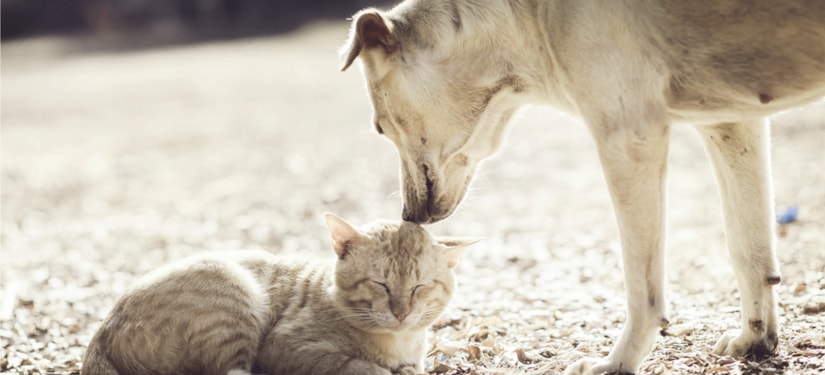How to Make Your Doggo and Kitty Friends

Contents
The joy of having a pet doubles when you bring another one into your home. The challenge, however, is to make it get along with your resident pet. The situation gets worse if the new addition to the family is an animal that is known to be aggressive, specifically a cat.
With its sharp claws, menacing hiss, and indifferent attitude, some, if not all cats can be difficult to understand or even deal with; much more if you have another pet to consider. Whether you want to introduce your new dog to your cat or vice versa, these four stages are applicable in making it possible:
Stage One: The Power of Scent
Before taking the new pet home, give the resident pet some time to adjust to the changes, such as the installation of baby gates (to separate the two pets physically), change in food and litter location, and a smaller space to roam around the house. A specific room for your resident pet is an excellent place to start.
When the new pet comes in, do not bring them to a face-to-face introduction immediately. Engage the senses first, specifically their sense of smell, by doing the following:
- Using the same towel for both pets;
- Stroking the dog after doing the same with the cat or vice versa; and/or
- Having the dog walk around the part of the house where the cat always resides.
Once the dog gets familiar with the scent of the cat along with the other smells in the house, you can slowly increase the exposure of both parties to one another.
Stage Two: Engaging the Sight
This time, your dog will be using its sense of hearing and seeing. Firstly, put your cat in a room with a closed door or baby gate. Then, open the door or baby gate just enough so that your pooch can have a full view of your cat. Do bear in mind that your dog must have its leash on so that you can control it once it starts attacking your cat.
The animal’s reactions could go two ways–either the cat or the dog would react violently. In this case, remove the dog immediately. Let the cat run away safely and repeat Stage One until you can sense that it is safe to try again.
On the other hand, if the dog reacted with plain curiosity, praise and give it a treat. Ensure that your pooch would associate only pleasant memories with the cat. It would further encourage your dog to make friends.
Stage Three: So Near, Yet So Far
This stage would be a bit of a level up from Stage Two. The difference is that both of your pets should come close to the baby gate, face-to-face. Give them a chance to bask in each other’s presence fully. Continue to observe their reactions as they come close to the barricade. Give both pets a treat once the encounter elicits nonviolent responses from both parties.
Stage Four: A Fully Supervised Contact
Now that they are finally acknowledging their presence in your household, it is time for the face-to-face contact. This meeting, however, must still be adequately supervised by putting the dog on a leash. These encounters must be done briefly, and both of their responses must be strictly observed. In the same manner as the previous stages, award prizes for a job well done.
Despite the positive feedback, do NOT leave both creatures all to themselves, not until you are confident that nothing will happen. This stage is usually the most prolonged period of the whole cat-and-dog introduction process.
The rule of thumb in these kinds of introductions is to give your pets all the time they need to get comfortable with the fact that they are not the only pet vying for your attention anymore. The good news is that cats and dogs can live harmoniously despite the perceived hatred you see in literature. If you are in the middle of this dilemma, do not give up. You can enjoy the best of both worlds in having two different types of pets in your household.
